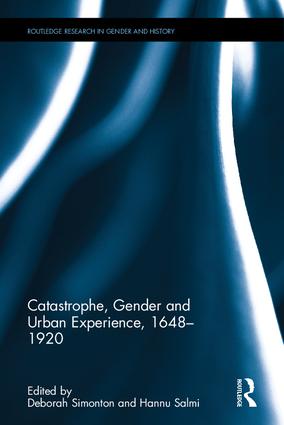The Baltic Storm Surge in November 1872: Urban Processes, Gendered Vulnerability and Scientific Transformations
 PhD Fellow Kristoffer Albris contributed to the book "Catastrophe, Gender and Urban Experience, 1648-1920" with the article "The Baltic Storm Surge in November 1872: Urban Processes, Gendered Vulnerability and Scientific Transformations".
PhD Fellow Kristoffer Albris contributed to the book "Catastrophe, Gender and Urban Experience, 1648-1920" with the article "The Baltic Storm Surge in November 1872: Urban Processes, Gendered Vulnerability and Scientific Transformations".
Based on an analysis of eyewitness accounts and historical sources, Kristoffer Albris and the two fellow authors analyze the impact of The Baltic Storm Surge in November 1872 on Danish and German towns and cities through a vulnerability approach. They investigate the ‘cracks in the past’ created by the flood, which gives access to otherwise hidden structures and patterns in history. From a historical point of view, disasters are productive events in that they act as lenses through which we become more knowledgeable about the development of societies.
In the chapter, they focus on three themes: 1) processes of urbanization, 2) gendered vulnerability and 3) scientific transformations in the fields of meteorology and flood protection. They focus on both Danish and German towns because there are important comparative perspectives, differences as well as similarities, between these that provide a more nuanced picture of why villages, towns, and cities in the region were vulnerable to an event like the storm surge in November 1872.
Rasmus Dahlberg, Kristoffer Albris and Martin Jebens: “The Baltic Storm Surge in November 1872: Urban Processes, Gendered Vulnerability and Scientific Transformations” in Catastrophe, Gender and Urban Experience, 1648-1920, Eds. Deborah Simonton and Hannu Salmi. New York and Oxon: Routledge.
